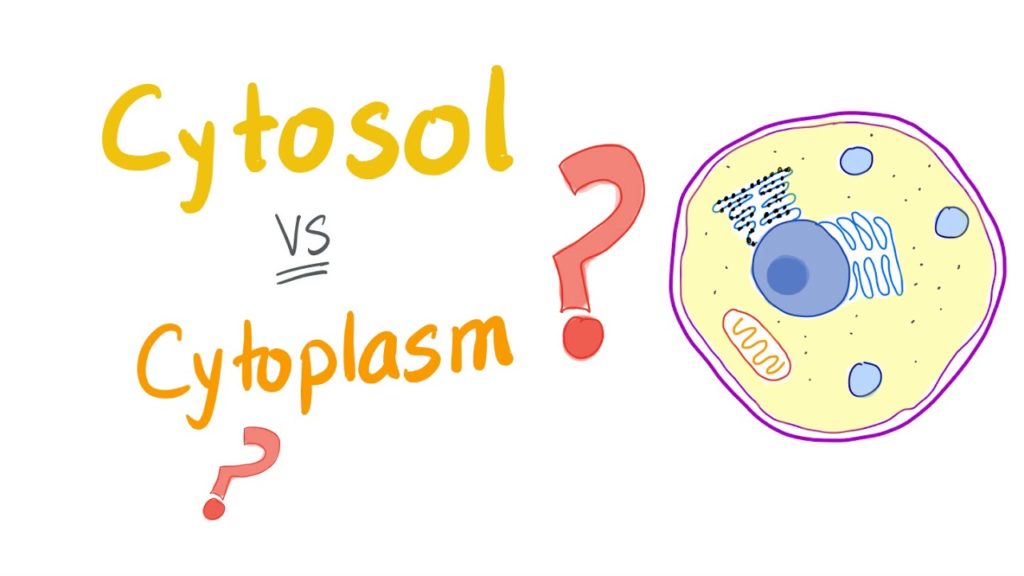What is the difference between cytosol and cytoplasm?
A cell is a functional unit of life. A cell can either be eukaryotic or prokaryotic. Cytosol and cytoplasm are the main components of the cell. They are used to describe the type of cell.
The lesson provides a detailed insight into the core difference between cytosol and cytoplasm in tabular form for easier understanding.

What is Cytosol?
The cytosol is the intracellular fluid of cytoplasm that comprises of water and suspension of cell organelles.
The fluid tends to contain amino acids, mRNA, ribosomes, sugars, dissolved ions, and proteins. The pH of the solution is a normal range between 7.0 and 7.4
Main Functions of Cytosol
- Create a medium through which chemical move within the cell
- Provide structural support to the cell and organelles
- Help in the transportation of metabolic wastes
- Act as a messenger
What Is Cytoplasm?
The cytoplasm is a cell component found within a cell membrane. It is the region where most of cell metabolic activities take place.
Cytoplasm comprises of the cytoplasmic matrix, cytoplasmic organelles, and cytoplasmic inclusions. The fluid contains water, proteins, lipids, and nucleic acids among other things.
Main Functions of Cytoplasm
- Maintain the shape of the cell
- Help to hold cellular organelles outside the nucleus
- Promote asexual and sexual reproduction
- Enhance anabolic activities of the cell
Comparison Chart: Cytosol Vs Cytoplasm
| Basic Terms | Cytosol | Cytoplasm |
| Meaning | Fluid presence in the cell membrane | Cell component inside the cell membrane |
| Composition | Proteins, water, soluble ions, small and large water-soluble molecules | 80% of water, nucleic acids, enzymes, lipids, amino acids, carbohydrates and non-inorganic ions. |
| Diversity | low | high |
| Components | Water, soluble small and large molecules | Organelles, cytosol and cytoplasmic inclusions |
| Metabolism | Chemical reactions | Large cellular activities like glycolysis and cell division |
| Core Functions | It dissolved molecules into the correct positions for efficient metabolism. | It freezes organelles in place for ensuring efficient metabolism |
| Extra Functions | Signal transduction and transportation of molecules take place | Nuclear division, cytokinesis and signal transduction take place |
Core Difference Between Cytosol and Cytoplasm In Point Form
- The cytosol is the fluid present in the cell membrane while the cytoplasm is the cell component inside a cell membrane
- Cytosol tends to comprise of proteins, water, soluble ions, small and large water-soluble molecules while cytoplasm consists of 80% of water, nucleic acids, enzymes, lipids, amino acids, carbohydrates, and non-inorganic ions.
- The diversity of cytosol is low while that of cytoplasm is high
- The main components of cytosol are water, soluble small, and large molecules whereas cytoplasm is organelles, cytosol, and cytoplasmic inclusions.
- The cytosol of prokaryotes tends to enhance chemical reactions while the cytoplasm is where large cellular activities take place.
- The main function of the cytosol is to dissolve molecules into the correct positions for efficient metabolism while the cytoplasm is to freeze organelles in place by ensuring efficient metabolism.
You May Also Like:
- Difference between Dendrite and Axon
- Difference between Cytoplasm and Protoplasm
- Difference between Cytoplasm and Nucleoplasm
- Difference between Heterokaryotic and Dikaryotic
Comparison Video
Conclusion
The dynamic solution inside a cell comprises of both cytosol and cytoplasm. These two components play a very vital role in a cell.
Understanding the difference between cytosol and cytoplasm is quite important during your revision for competitive exams.
More Sources and References